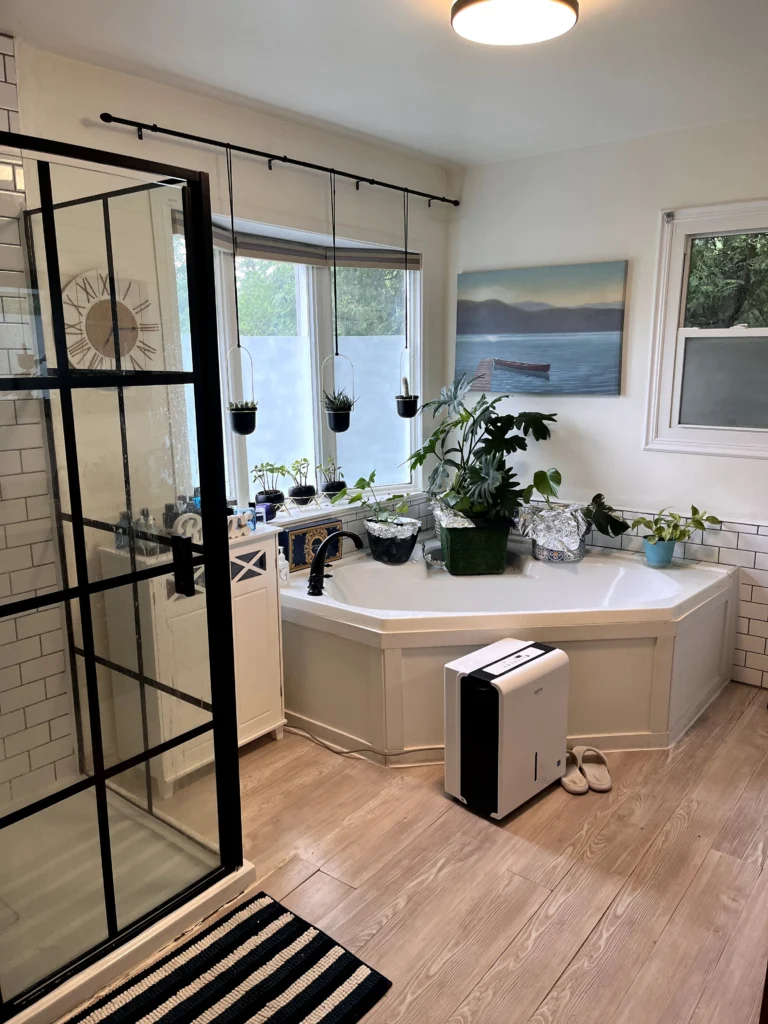I’ve been called in time and time again to fix other contractor’s mistakes—and unfortunately, it’s more common than you think. In this article, I’ll walk you through the top 3 renovation failures we’re hired to repair, how we approach them, and what they cost homeowners in time, money, and trust.

1. Poor Waterproofing Around Showers and Tubs
One of the biggest issues I fix is water infiltration caused by bad waterproofing jobs—especially around showers, tubs, and vanities. Contractors will tile directly onto thin plywood or skip sealing corners and seams with proper waterproofing membranes. That’s a recipe for mold, mildew, and eventual tile collapse.
One homeowner I worked with had a newly tiled shower that started leaking through the ceiling within a month. When we tore it down, we saw they hadn’t even used a proper backing board like DensShield or Schluter Kerdi. It was regular drywall behind the tile!
Why this happens: It’s a mix of shortcuts and lack of knowledge. Some contractors just don’t understand the importance of prepping a wet area properly.
The fix: We tear everything back to the studs, rebuild the wall structure, and install waterproof membranes. Yes, it costs more—but it saves the entire bathroom.
📚 Here’s some related articles we’ve written that you may be interested in:
2. Bad Tiling and Improper Floor Prep
I can’t tell you how many times I’ve walked into a bathroom with cracked grout, popping tiles, or soft flooring underneath tile installs. Most of the time, it’s because the contractor tiled over subfloor that was too thin or didn’t reinforce it properly. In some cases, they skipped using mesh, didn’t use mortar, or used adhesive where tile mortar should’ve been used.
One time, we had to redo a full bathroom floor where the tile was laid over quarter-inch plywood with no mortar mesh underneath. The floor flexed, grout cracked, and tiles shifted. The homeowner had to pay twice for the job—once to do it wrong, then again for us to do it right.
The fix: We properly evaluate subfloor thickness, reinforce if needed, and use tile mortar with mesh (or systems like Schluter Ditra). These aren’t fancy upgrades—they’re the minimum standard.
📚 Here’s some other articles we talked about:
3. Sloppy Electrical & Plumbing Work
This one is not just inconvenient—it’s dangerous. We’ve opened up walls to find live wires exposed, ungrounded outlets near water, and DIY-level plumbing that wasn’t sealed properly. We even found a faucet connected with rubber tubing that burst after just a few weeks.
A client once hired us after their first contractor installed a toilet that wasn’t connected to the drain properly. It led to water leaking underneath the tiled floor, creating mold that spread under the vanity and baseboards. They had to gut the whole thing—and their trust was broken.
Why this happens: Some contractors sub out to unqualified trades or rush the job with whoever’s available. Others try to cut corners.
The fix: We never cut corners. Our in-house team handles every trade properly—from licensed electricians to certified plumbers. And if you’ve had a bad job done before, we’ll take the time to inspect every connection before we rebuild.
📚 Related:
Why Does This Happen So Often?
In short, it’s a mix of inexperience, rushing, and cutting corners to win a bid. Contractors who underbid jobs end up scrambling to finish quickly or hiring cheap labor to make a profit. In the end, it’s the homeowner who pays—sometimes twice.
Dangerous mistakes like improper waterproofing or exposed electrical work need urgent repair. These aren’t just cosmetic issues; they can lead to mold, fire hazards, or severe property damage.
The Emotional & Financial Toll of a Bad Reno
I’ve seen homeowners break down in frustration after trusting someone who didn’t deliver. It’s not just money—it’s time lost, stress added, and having to live in a construction zone all over again.
A bad reno job isn’t just expensive to fix—it’s emotionally draining. And for many, it kills the excitement of improving their home.
How We Spot and Fix Other Contractor’s Mistakes
When we’re called in to fix someone else’s mess, we start with a detailed inspection—we look at walls, floors, plumbing, and electrical to figure out what’s safe and what needs to go. We rebuild from the foundation up, using the right materials for long-term reliability.
We also walk you through every step so you know what’s happening, why it failed before, and how we’re going to make sure it doesn’t happen again.
Need help now? Contact Raakss Reno for a consultation.
How to Spot Poor Workmanship Early
Here’s what to look out for:
-
Sloppy grout lines or uneven tile
-
Water pooling near fixtures
-
Exposed wires or mismatched switches
-
Materials that feel “soft” or bouncy
-
Quotes that are too vague or too low
If your contractor isn’t asking questions, that’s a red flag. Communication is everything.
Are Budget Renos More Prone to Problems?
Not always—but the cheapest quote is usually a sign that something’s being skipped. You don’t need the most expensive team, but you need someone who prices the job fairly and transparently.
Want to learn more? Read our article on cheap vs. value quotes to avoid falling for a sketchy offer.
My Message to Anyone Burned by a Renovation
If you’ve had a bad experience, I get it. It’s hard to trust again. But when you work with someone who listens, communicates, and backs up their work—it makes all the difference.
We’re not just here to renovate your bathroom—we’re here to restore your confidence in the process.
Explore More
